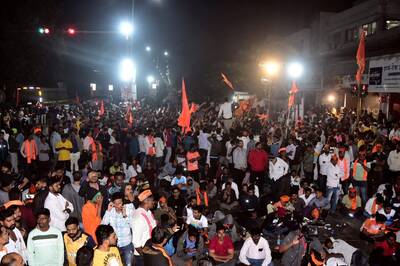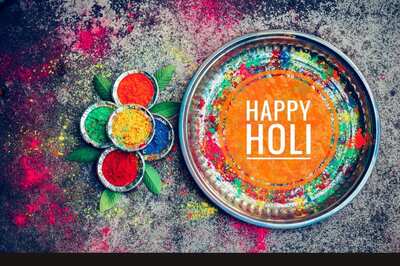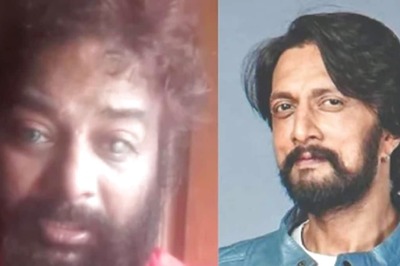
views
New Delhi: Delhi's air quality worsened through the day and went off the charts by the evening as the city recorded its worst quality air of the year the morning after Diwali, authorities said on Thursday.
The air quality index (AQI) was recorded at "severe-plus emergency" category due to rampant bursting of toxic firecrackers, they said.
In gross violation of a Supreme Court order, people in several cities burst firecrackers until at least midnight, two hours after the 10 pm deadline. Loud bangs rent the air in New Delhi. Violations were also recorded in Mumbai, Kolkata, Jaipur and other major cities.
Partly as a result of smoke from the firecrackers, the overall AQI in Delhi jumped to 642 which falls in the "severe-plus emergency" category, according to data by the Centre-run SAFAR (System of Air Quality and Weather Forecasting And Research).
"The Delhi Air Quality Index is 500+ at present. Early morning at 1 am, smoke layer became thick and started to trap pollutants near the surface rapidly. However, air quality is recovering from the afternoon and is likely to touch 'very poor' range by night provided no additional local emissions are added anymore," it said in its report.
The contribution of PM2.5 and PM10 had increased from 50 per cent to 70 per cent last night, indicating an increased share of locally generated firecracker emissions, the SAFAR said.
The overall AQI of the city was 11 times the permissable limit.
An AQI between 0 and 50 is considered "good", 51 and 100 "satisfactory", 101 and 200 "moderate", 201 and 300 "poor", 301 and 400 "very poor", and 401 and 500 "severe". AQI above 500 falls in the "severe-plus emergency" category.
The sharp spike in pollution is caused by rampant burning of firecrackers that has led to the formation of a smoky layer across the national capital and drastically reduced visibility, the authorities said.
The SAFAR had warned that even if partial toxic firecrackers as compared to last year were burnt, then the air quality would fall in the "severe" category.
On Thursday, the PM2.5 (particles in the air with a diameter of less than 2.5 micrometres) level was recorded at 492 gm-3, more than eight times the permissable limit.
The PM10 (particles in the air with a diameter of less than 10 micrometres) level was recorded at six times the permissable limit at 618 gm-3, according to the SAFAR.
India's official permissible PM2.5 limit is 60 gm-3, while that of PM10 level is 100 gm-3.
Ultra fine particulate pollutants PM2.5 and PM10 in the air pose health hazards as they can enter the respiratory system and reach the bloodstream.
Twenty three areas in Delhi recorded "severe" air quality while eight areas recorded "very poor" quality air, according to data of the Central Pollution Control Board.
A "severe plus emergency" level AQI essentially means that even healthy people may suffer from respiratory illnesses on prolonged exposure. This air will seriously affect those with ailments, according to the advisory issued by the SAFAR.
Delhi's air quality is expected to remain in this category over the next two days as the smoke emitted by fire crackers has slowed down the process of pollutant dispersion, the agency said.
The Supreme Court has allowed bursting of firecrackers from 8 pm to 10 pm only on Diwali and other festivals. The top court also allowed manufacture and sale of just "green crackers" which have low emission of light, sound and harmful chemicals.
The court said the police should ensure that there was no sale of banned firecrackers and in case of any violation, the Station House Officer (SHO) of the police station of the area would be held personally liable and this would amount to committing contempt of the court.
Despite the order, certain places recorded violations where firecrackers were burnt before and after the set time frame. These included Mayur Vihar Extension, Lajpat Nagar, Lutyens' Delhi, IP extension, Dwarka and Noida Sector 78.
The police admitted that violations were observed and it would take serious legal action against the people violating the apex court order. They said they were continuously patrolling the areas to check for violations.



















Comments
0 comment